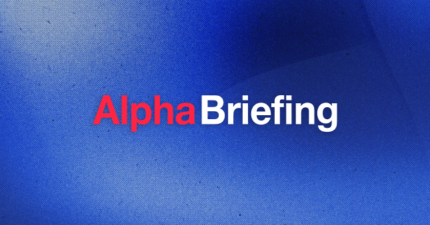Bitcoin Halving: The Essential Guide for Exchanges, Neobanks, and Financial Institutions
Introduction
The financial ecosystem is increasingly recognizing the significance of digital assets, with Bitcoin at the forefront of this paradigm shift. In this context, the phenomenon of Bitcoin halving gains paramount importance, especially for exchanges, neobanks, and financial institutions aiming to integrate digital assets into their offerings. This guide explains the concept of Bitcoin halving, underscoring its pivotal role in the digital asset space.
The Basics of Bitcoin Halving
To fully grasp the significance of Bitcoin halving, it’s essential to understand the fundamentals of this event and its role in the Bitcoin ecosystem. This section delves into the basics of Bitcoin halving, explaining what it is, when it occurs, and how it is hardcoded into Bitcoin’s protocol. By understanding these foundational concepts, exchanges, neobanks, and financial institutions can better navigate the implications of this pivotal event in the digital asset space.
What is Bitcoin Halving?
Bitcoin halving refers to the event that halves the rate at which new bitcoins are generated, effectively diminishing the block reward for miners by 50%. This event occurs every 210,000 blocks, or approximately every four years, ingrained into Bitcoin’s code by its creator to ensure a deflationary model.
When Is the Next Bitcoin Halving?
The inception of Bitcoin in 2009 introduced a new era of decentralized financial systems, with the halving event embedded in its operation from the start. This mechanism ensures that Bitcoin’s total supply will asymptotically approach 21 million, making it a scarce resource and potentially increasing its value over time. The next Bitcoin halving will take place in 2024, around April 19th or 20th. Halvings have taken place approximately every four years, although the date of the next halving is to be determined.
We believe that the halving, combined with the recent approval of Bitcoin ETFs by the SEC, will bring significant attention and potential growth opportunities to the cryptocurrency space. The SEC’s approval of Bitcoin ETFs provides a regulated and accessible avenue for institutional investors to gain exposure to Bitcoin, bringing credibility and confidence to the market.
How the Halving Process Works in the Bitcoin Network
The halving process is a fundamental component of Bitcoin’s protocol. As miners validate transactions and add them to the blockchain, they are rewarded with bitcoins. The halving event decreases this reward, thus slowing down the rate at which new bitcoins are created and released into circulation.
The Impact of Halving on the Mining Process and Rewards
The immediate consequence of halving is a reduction in the incentive for miners. This event can lead to a transient shakeout of miners with higher operational costs, effectively increasing the security and robustness of the network by favoring more efficient miners.
The Importance of Halving in Bitcoin’s Economy
- Controlling Inflation Within the Bitcoin Ecosystem: Bitcoin’s halving events are critical in controlling inflation and mimicking the scarcity of precious metals. By design, these events decrease the supply of new bitcoins, thus potentially driving up demand and, consequently, the price of Bitcoin.
- Effect on Bitcoin’s Supply and Demand Dynamics: The reduction in block rewards could reduce the rate at which new bitcoins are sold into the market. Historically, this decreased supply against sustained or increasing demand has led to significant price increases post-halving events.
Impact of Bitcoin Halving on Exchanges and Financial Institutions
The Bitcoin halving event has far-reaching implications for exchanges and financial institutions operating in the digital asset space. As the halving approaches, these entities must prepare to navigate the potential market volatility and increased user interest that typically accompany this event. This section explores the impact of Bitcoin halving on exchanges and financial institutions, providing insights into historical market reactions and the importance of robust planning and analysis.
Past halvings in 2012, 2016, and 2020 have seen considerable surges in Bitcoin’s price, attracting heightened market interest. Exchanges and financial institutions should analyze these patterns to understand potential market dynamics around halving events.
While historical precedent suggests a bullish outlook post-halving, market dynamics are complex and influenced by broader economic factors. Institutions should hence approach speculation with caution, informed by robust market analysis.
Preparing for the Halving Event
Robust infrastructural planning and market analysis are crucial for exchanges and neobanks in preparation for the halving. Ensuring system scalability to handle increased transaction volumes and user engagement becomes paramount.
Educational initiatives explaining the halving process and its potential implications on market dynamics can empower users, fostering a more informed and engaged user base.
The Global Perspective: Halving and Its Broader Implications
Bitcoin halving resonates beyond its immediate ecosystem, influencing the broader cryptocurrency and financial markets. It acts as a catalyst for discussions on decentralized finance (DeFi), monetary policy, and cryptocurrency adoption by mainstream financial institutions.
Halving events have historically sparked interest from traditional financial sectors and regulators, with an eye on the evolving regulatory framework and the mainstream adoption of cryptocurrencies.
Bitcoin Halving and Regulation
Regulatory responses to halving events have varied, with some jurisdictions adopting a wait-and-see approach, while others use these events as touchpoints to reevaluate cryptocurrency regulations.
As Bitcoin and other cryptocurrencies continue to gain mainstream acceptance, increased attention from policy makers around future halving events will likely lead to more nuanced regulations. Ahead of the 2024 halving, the industry has experienced regulatory support for bitcoin ETFs and stablecoin legislation, along with regulatory backlash for bitcoin mining energy usage and asset classification debates over security versus commodity elsewhere.
Advantages of Bitcoin Halving for Digital Asset Companies
Bitcoin’s halving events present unique opportunities for innovation and growth within the fintech and digital asset sectors. Companies can leverage these events to introduce new products, attract investment, and engage with a growing user base interested in digital assets.
Creative financial products and services designed around the Bitcoin halving cycle, such as halving-themed investment funds or derivative products, can provide new revenue streams and differentiation opportunities for digital asset companies.
Conclusion
The phenomenon of Bitcoin halving stands as a testament to the ingenious design of this cryptocurrency, emphasizing scarcity, reducing inflation, and potentially driving up value. As the digital asset space continues to evolve, understanding and leveraging the implications of the Bitcoin halving event can provide significant strategic advantage for exchanges, neobanks, and all stakeholders within the financial ecosystem. Embrace this pivotal moment in the digital asset space to innovate, educate, and grow.
To access this resource, please provide a little info.
Complete the form below to view the document.


